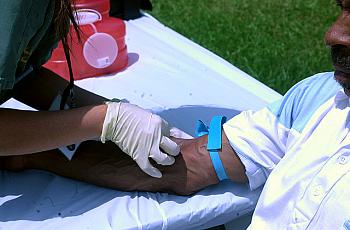
William Heisel
Contributing Editor

Contributing Editor
I have reported on health for most of my career. My work as an investigative reporter at the Los Angeles Times and the Orange County Register exposed problems with the fertility industry, the trade in human body parts and the use of illegal drugs in sports. I helped create a first-of-its-kind report card judging hospitals on a wide array of measures for a story that was a finalist for the Pulitzer Prize. I was one of the lead reporters on a series of stories about lead in candy, a series that also was a finalist for the Pulitzer.For the Center for Health Journalism (previously known as Reporting on Health), I have written about investigative health reporting and occasionally broke news on my column, Antidote. I also was the project editor on the Just One Breath collaborative reporting series. These days, for the University of Washington, I now work as the Executive Director for Insitutue for Health Metrics and Evaluation's Client Services, a social enterprise. You can follow me on Twitter @wheisel.

Learning how to locate and use patient discharge data will make your reporting stronger and provide you with objective evidence for evaluating hospitals' claims. Such data can also lead to new story threads. Here's a quick-start guide.

When you’re searching for a question to guide your data reporting, it's worth thinking about scope and impact. How big or small is the problem you are trying to explain or expose?

A recent Sac Bee investigation revealed disturbingly high staff turnover rates at a number of California nursing homes. You can discover similar trends by learning how to navigate the data in California’s Office of Statewide Health Planning and Development and similar agencies nationwide.

Every time someone famous dies after a medical error, hopes rise that we will see a meaningful response that will improve patient safety conditions. Joan Rivers' death has, in an incredibly quick time frame, led to some significant consequences for those involved.

In California, the range of physician performance is surprisingly wide, according to a recent survey that ranked groups on a 100-point scale. More than 40 physician groups scored below 60. Where might we find insights into how to help these low-performers improve?

Embarking on a data-driven story? Don’t just compile gigabytes of data and hope that a story will emerge. Decide what the question is that’s most crucial to your audience right now.

A recent California survey found that even the highest-rated provider group received only a C+ rating from its patients. Does this reveal deep flaws in the way care is delivered or have patients come to expect too much from health care providers?

Health care providers aren't perfect. None of us are. But in a recent report on patient experiences, California physician groups were assigned a rating on a scale of 0 to 100. Not one group managed to score in the 80s or 90s. What's going on here?

Three high-profile deaths that occurred over the past year are worth noting as reminders of the larger topics that should be top of mind for health writers.

A good friend of mine recently underwent a significant surgery. Several weeks out, he was still experiencing some negative side effects. When he asked the surgeon about it, he didn’t get much more than a blank stare.